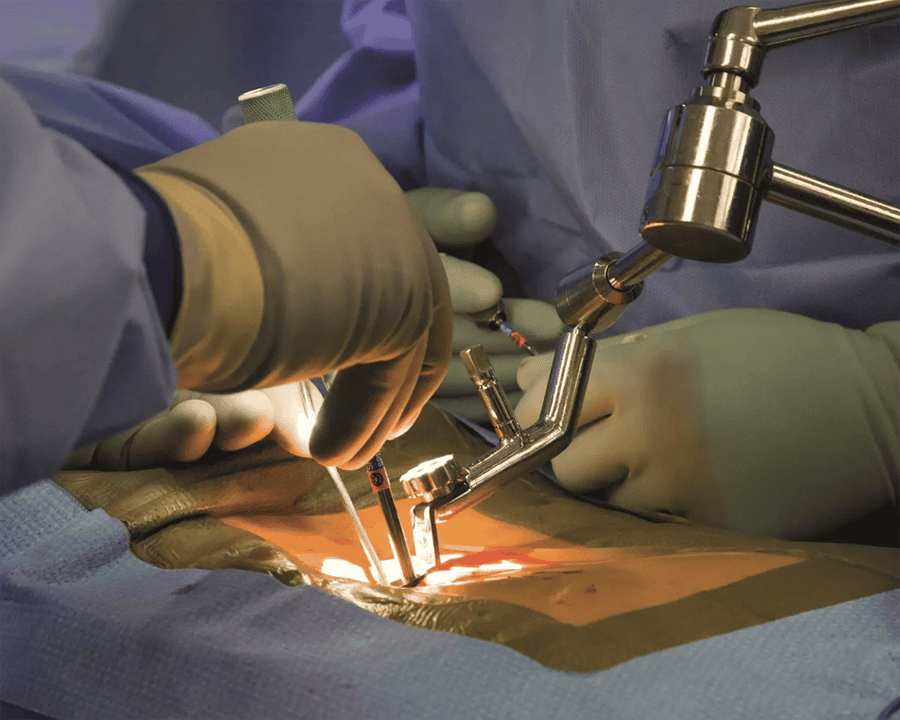You might be wondering why surgery for back pain is such a common thing. Well if you consider how back pain is a common ailment affecting millions of people worldwide, it is no wonder that many of them end upgoing for surgery to fix their back problems. Chronic back pain is defined as pain that persists for more than three months. That can significantly impact a person’s quality of life, and it is usually the result of a muscle sprain.
While non-surgical treatments such as physical therapy, rest, and medication are often effective, there are cases where surgery may be the best course of action. When this is the case, bending, standing, walking, and twisting become unbearable. The pain can range from a dull persistent ache to a burning, stabbing shooting sensation that radiates down the spine and into the legs.
Surgery can provide significant relief for certain chronic back pain conditions. It is essential to understand that the recovery process also includes physiotherapy. Back surgery can be a successful treatment option, but it is important to remember that it’s not a cure-all.
Common Conditions That May Require Surgery
Herniated Disc: This occurs when the soft gel-like center of a spinal disc bulges or ruptures, putting pressure on nearby nerves. This can lead to pain, numbness, or weakness in the legs or arms. If conservative treatments fail to provide relief, then surgery may be required to remove the herniated disc, and relieve pressure on the nerves.
Degenerative Disc Disease: Occurs when the discs in the spine wear down over time. This can lead to the loss of range of motion, stiffness, and pain. In severe cases, surgery may be necessary to repair or replace the damaged discs.
Spinal Stenosis: Occurs when the spinal canal narrows compressing the spinal cord and nerves. This can cause pain, weakness, numbness, or even result in loss of bladder and bowel control. Surgery may be necessary to widen the spinal canal and relieve pressure on the nerves.
Facet Joint Arthritis: Occurs when the small joints between the vertebrae become inflamed and arthritic, leading to chronic pain.
Scoliosis: This is a condition whereby the spine curves abnormally to the side and causes stress on the back muscles and joints. While mild cases may not require treatment, severe scoliosis can lead to deformity, severe pain, and respiratory problems.
Spondylolisthesis: Occurs when one of the vertebrae slips forward over another vertebra. This can cause weakness, pain, and numbness. Surgery may be necessary to prevent further slippage and stabilize the spine.
Is Surgery for Back Pain Necessary?
Pain is not just a symptom, pain is a signal that your body needs attention. When non-surgical treatments have failed, there are situations when surgery may be the best course of action. This may include severe unrelenting pain. If the pain is so severe that it interferes with the quality of life and daily activities, surgery might even be required.
Progressive neurological symptoms are often signs of nerve damage. Numbness, weakness, and loss of bowel and bladder control, are often indications that surgery may be needed to prevent further deterioration. If the person experienced a failed non-surgical treatment that hasn’t provided relief, then spinal surgery may be an alternative option.
In some cases the spine may become unstable, requiring surgical intervention to prevent further damage.
 Different Types of Back Surgery
Different Types of Back Surgery
There are various types of back surgery, each tailored to address specific conditions. It is important to consult with a medical professional to discuss the benefits, risks, and potential alternatives. Factors that may influence the decision include the severity of pain and symptoms, overall health and medical history, complications and risk factors, and recovery process.
Understanding the different types of spine surgery that can include artificial disk replacements and spinal fusion, the recovery process, and the potential risks involved, helps you to make informed decisions about your treatment options.
The different types of surgical procedures include
Laminectomy: This procedure is often used to treat spinal stenosis and involves removing a portion of the lamina, which is a bony structure that protects the spinal cord.
Vertebroplasty: This procedure involves using bone cement that is directly injected into a fractured vertebra to strengthen and stabilize the fracture.
Artificial disc replacement: This procedure involves replacing a damaged disc with an artificial disc.
Spinal fusion: This procedure is often used to treat scoliosis or disc disease. It involves joining two or more vertebrae permanently together which stabilizes the spine. Metal plates, rods, and screws may be used to hold the vertebra together to form one solid unit.
Minimal invasive surgery: This procedure involves smaller incisions and the use of specialized instruments, resulting in quicker time recovery and less pain.
Foraminotomy: This procedure relieves pressure on compressed nerves through the foramina, which are passageways through which the spinal nerves exit the spine. This can be performed as a stand-alone technique, or combined with a discectomy or laminectomy. This procedure is often considered for early disk degeneration to prevent a more invasive surgery later on.
Depending on the type of back surgery performed, recovery can vary depending on your overall health and other factors. Recovery involves rest and rehabilitation that includes physiotherapy to help restore flexibility, range of motion, and strength. Most people can expect a gradual return to normal daily activities over several weeks or months.
Physiotherapy Before and After Back Surgery
Back surgery can be highly effective for improving function and providing pain relief. However, some potential risks and complications include infection, bleeding, nerve damage, failed surgery, and chronic pain. It is important to discuss these risks and complications with your healthcare provider and take steps to minimize them.
Physiotherapy plays a crucial role in both the preparation for and recovery from back surgery. It helps to strengthen the muscles surrounding the spine, improve flexibility, and reduce pain.
A physiotherapist will conduct a comprehensive evaluation to assess your current level of function, pain, and range of motion. This information will help determine the most appropriate exercises and strategies before surgery. The physiotherapist will provide you with valuable information about the surgery, the recovery process, and what to expect after surgery.
Physiotherapy typically begins shortly after surgery focusing on gentle exercises to prevent stiffness and promote healing. Gradual exercises are introduced to improve flexibility and increase your range of motion in the spine. As healing progresses the physiotherapist will guide you through exercises to strengthen the muscles surrounding the spine, improving stability and reducing the risk of re-injury.
A Physiotherapist will Continue to Provide Support
This will be throughout your recovery process offering advice on lifestyle modifications and pain management techniques. Physiotherapy protocols are planned around the type of surgery you had, your individual needs, and your progress. Your willingness to adhere to your physiotherapy program is essential for a successful recovery, and we are here to help you along the way.
While back surgery may become a necessary step in managing severe spinal conditions, it is not a guaranteed cure-all. Post-operative recovery is a critical phase that requires patience and dedication. Physiotherapy plays a pivotal role in this process aiding in rehabilitation, pain management, and the restoration of strength and flexibility.
By working closely with your healthcare professionals, you can maximize your chances of a successful recovery and improve your overall quality of life.







